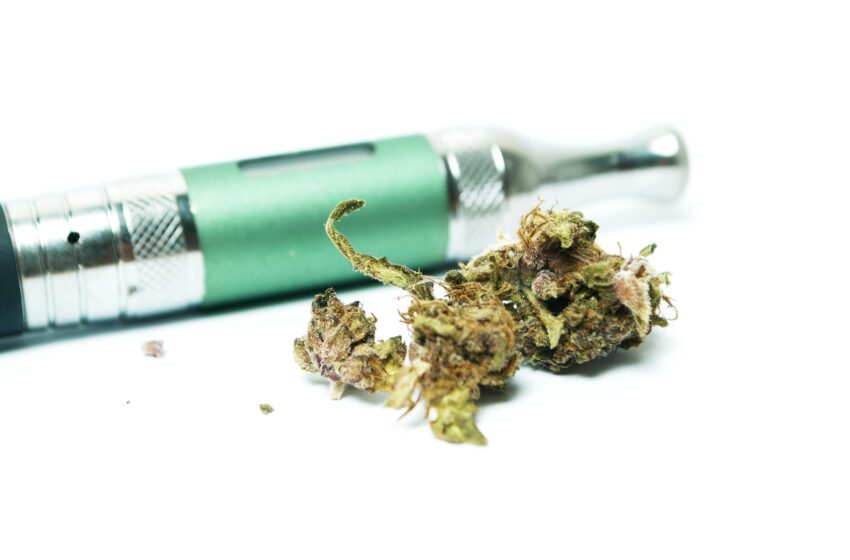A group of EU citizens is petitioning European regulators to stop treating vapor products as tobacco.
These are busy days for Dustin Dahlmann. The chairman of the Bundnis fur Tabakfreien Genuss (BfTG), Germany’s only e-cigarette trade association independent of the tobacco industry, has been a sought-after interviewee since the country’s vapor market experienced a dramatic sales drop in October. In a BfTG survey of 600 German e-cigarette retailers, more than half of respondents reported sales declines of 30 percent to 40 percent whereas almost one-fifth related revenue losses of more than 50 percent.
The market slump occurred in the wake of an outbreak of vaping-related lung injuries and deaths in the U.S. Although regulation is stricter in the European Union (EU) and the main chemicals under suspicion in the U.S., including THC and vitamin E acetate oil, are prohibited in e-cigarettes in the EU, the news has unsettled German consumers, says Dahlmann. “Many customers find themselves in a Catch- 22 situation. We observe that many who would like to quit cigarettes with the help of vape products are returning to combustibles following the events in the U.S.”
The situation looks similar in France: According to L’Express, sales of e-cigarettes have recently fallen between 10 percent and 40 percent. The downturn in two of the EU’s leading vapor markets comes at a time when an European Citizens’ Initiative (ECI) is calling upon European regulators to take vapor products out of the Tobacco Products Directive (TPD2), differentiate them from pharmaceutical products and create a proportionate and evidence-based regulatory environment.
Called Vaping is Not Tobacco, the campaign was initiated by eight EU citizens from Germany, France, the U.K., Italy, Belgium, Romania, Ireland and the Czech Republic, among them Dahlmann, who has been registered as its official representative. As its main goals, the initiative lists helping smokers access vapor products that can help them transition out of tobacco, allowing flavored vapor liquids, preventing access by young people to vapor products, reducing risks for vapers by introducing robust product quality, manufacturing and safety standards, and ensuring responsible marketing of vapor products that do not target youth.
Introduced in the 2007 Treaty of Lisbon, the ECI was designed as a tool to improve democracy by enabling citizens to participate directly in the development of EU policies. If a group of citizens representing at least one quarter of EU member states gathers 1 million signatures supporting their initiative, they can call directly on the European Commission to propose a legal act. The commission then decides on what follow-up action to take. An ECI cannot be submitted by organizations or companies.
Dahlmann’s petition, which started in late April, has until February 2020 to collect the required signatures. At press time, 47,000 people had signed. “We are grateful for this, but we had expected more support from vapers,” says Dahlmann. “We still have three more months to improve this result, and we will make good use of this time. Each vaper should understand how important a differentiation between e-cigarettes and combustible cigarettes is in legislation and in public awareness.”
The initiative is using all marketing tools available, from classical tools to social media communication. It also participates in events such as international e-cigarette exhibitions to clarify the differences between tobacco and vapor products. “Besides, a large number of retailers throughout Europe support our campaign and have lists of signatures available,” says Dahlmann.
A DIFFERENT SITUATION
According to Dahlmann, the outbreak of vaping-related illnesses in the U.S. and the subsequent crackdown on the sector by regulators has boosted the number of signatures. “In light of the partly very unfair media reporting about the vaping-related illnesses in the states, we have noted a strong alliance of solidarity among consumers and retailers,” says Dahlmann. “Many users are aware that regulated e-cigarettes have nothing to do with the lung injuries and deaths. The issue in the U.S. is about e-joints, illegal products for the consumption of drugs. Only if the public is informed about the true cause of the disease as well as the tremendous advantages of vapor products, a change in thinking can take place again. Everyone who is of the same opinion should support Vaping is Not Tobacco.”
Apart from the petition, the initiative also includes a campaign to enable European citizens to get in touch with their respective national candidates for the European Elections that took place in May. Dahlmann says that this part of the initiative reached many candidates and members of European Parliament. “The theme is education and motivation towards a clear distinction between tobacco and e-cigarettes. The basic campaign is being used a lot, and we hope for a new political valuation of vaping in Europe.”
Recently, he adds, numerous measures had been taken to educate the public with regard to vaping, with many of them being highly successful. Together with other trade organizations, the BfTG has been educating the European media about the events in the U.S.
WELL ORGANIZED
The petition for smarter vaping regulation is not the first attempt at influencing e-cigarette legislation in Europe. In contrast to its predecessors—none of which succeeded—the current initiative has been meticulously planned. With all of the petitioners representing vapor companies and organizations, including the Czech Vaping Association and the organizers of Vapitaly, a leading Italian trade fair, the initiative has financial support. However, critics have seized on the fact that €10,000 ($11,077) of the €35,000 in donations collected so far came from Imperial Brands.
For Dahlmann, it is irrelevant. “Like many others, Imperial Brands has supported the campaign financially,” he says. “All participants have jointly developed the wording of the campaign, not only Imperial. That’s why we are 100 percent behind the initiative. The committee members are the only ones to take on official responsibility and decide on the execution of the campaign. Imperial doesn’t have any control of it. It’s an initiative for e-cigarettes and hence the exact opposite of a tobacco campaign. Otherwise, the BfTG as a tobacco-free association would not have supported the campaign.”
HIGHLIGHTING THE ISSUE
Collecting 1 million signatures by February seems ambitious. Even if it is achieved, the EU can still object to considering the initiative. Nevertheless, Dahlmann remains confident. “The initiative is about to find as many supporters as possible so that the necessity of the campaign becomes obvious. Achieving that would be a success for us. If we don’t reach our goal of 1 million signatures, we will continue with our political work to draw attention to the urgency of this issue. If the required number of signatures is gathered, the European Commission is not obliged to submit a proposal for a legislative act. However, it has to meet with the initiators so that they can elucidate the topics covered by the initiative. Furthermore, the organizers have the opportunity to present their initiative in a public hearing at the European Parliament.”
Even if the petition succeeds, the desired legislation would still be a long way off. “If the commission decides to submit a proposal for a legal act, the regular legislative process will get started,” explains Dahlmann. “The commission’s proposal will be presented to the legislator, which usually is the European Parliament and the European Council—in some cases only the latter. If the proposal is adopted, it will become law.”











